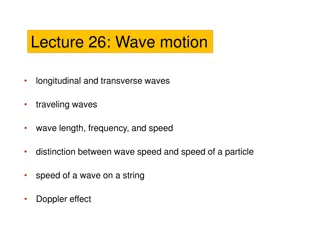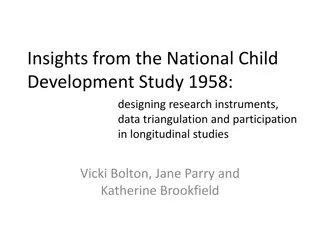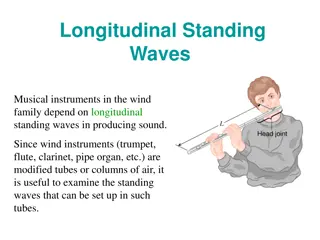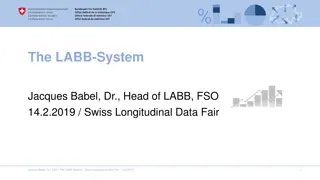
Types of Longitudinal Studies: Panel, Cohort, and Record Linkage
Explore the various types of longitudinal studies including panel studies, cohort studies, and record linkage studies. Learn about the differences between prospective and retrospective studies, as well as longitudinal versus cross-sectional studies, in the field of research.
Download Presentation

Please find below an Image/Link to download the presentation.
The content on the website is provided AS IS for your information and personal use only. It may not be sold, licensed, or shared on other websites without obtaining consent from the author. If you encounter any issues during the download, it is possible that the publisher has removed the file from their server.
You are allowed to download the files provided on this website for personal or commercial use, subject to the condition that they are used lawfully. All files are the property of their respective owners.
The content on the website is provided AS IS for your information and personal use only. It may not be sold, licensed, or shared on other websites without obtaining consent from the author.
E N D
Presentation Transcript
Section 2: Types of longitudinal studies From the CLOSER Learning Hub Module: Introduction to longitudinal studies
Panel studies Follow the same individuals over time and vary considerably in scope and scale Household panel studies collect information from the whole household, rather than individuals Household panels incorporate new participants as households break-up and reform
Cohort studies Follow groups of individuals with specific temporal boundaries Birth cohort studies which follow groups of people born within the same time period Cohort studies represent a particular cohort of people, rather than the population as a whole
Record linkage studies Conducted without personal interviews by linking administrative records (for example, benefit receipts or census records) for the same individuals over time Advantages: potentially large sample sizes, less risk of participant drop out or reporting error Disadvantages: limited by the nature of the records they are based on Example: UK Census Longitudinal Studies
Prospective vs retrospective studies Prospective studies collect data about their participants as their characteristics or circumstances change. Example: British birth cohort studies Retrospective studies collect information about participants pasts, either through recall questions or linking historic records. Example: Hertfordshire Cohort Study
Longitudinal vs cross-sectional studies Cross-sectional Longitudinal One point in time Several points in time Different samples Same sample Snapshot of a given point in time, change at a societal level Change at the individual level Ex. British Social Attitudes Survey, Labour Force Survey Ex. British Birth Cohort Studies, Understanding Society






















